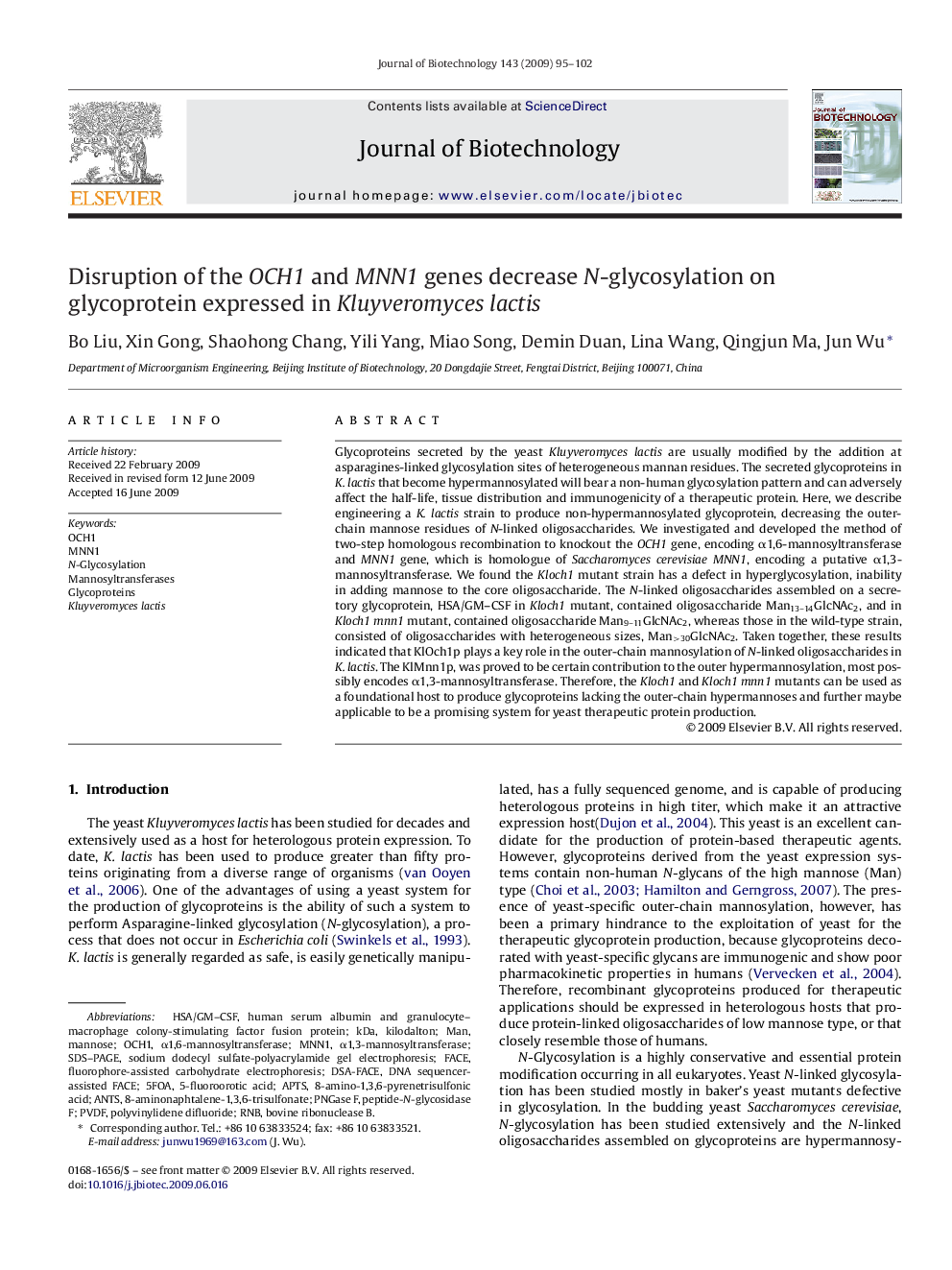| Article ID | Journal | Published Year | Pages | File Type |
|---|---|---|---|---|
| 24595 | Journal of Biotechnology | 2009 | 8 Pages |
Glycoproteins secreted by the yeast Kluyveromyces lactis are usually modified by the addition at asparagines-linked glycosylation sites of heterogeneous mannan residues. The secreted glycoproteins in K. lactis that become hypermannosylated will bear a non-human glycosylation pattern and can adversely affect the half-life, tissue distribution and immunogenicity of a therapeutic protein. Here, we describe engineering a K. lactis strain to produce non-hypermannosylated glycoprotein, decreasing the outer-chain mannose residues of N-linked oligosaccharides. We investigated and developed the method of two-step homologous recombination to knockout the OCH1 gene, encoding α1,6-mannosyltransferase and MNN1 gene, which is homologue of Saccharomyces cerevisiae MNN1, encoding a putative α1,3-mannosyltransferase. We found the Kloch1 mutant strain has a defect in hyperglycosylation, inability in adding mannose to the core oligosaccharide. The N-linked oligosaccharides assembled on a secretory glycoprotein, HSA/GM–CSF in Kloch1 mutant, contained oligosaccharide Man13–14GlcNAc2, and in Kloch1 mnn1 mutant, contained oligosaccharide Man9–11GlcNAc2, whereas those in the wild-type strain, consisted of oligosaccharides with heterogeneous sizes, Man>30GlcNAc2. Taken together, these results indicated that KlOch1p plays a key role in the outer-chain mannosylation of N-linked oligosaccharides in K. lactis. The KlMnn1p, was proved to be certain contribution to the outer hypermannosylation, most possibly encodes α1,3-mannosyltransferase. Therefore, the Kloch1 and Kloch1 mnn1 mutants can be used as a foundational host to produce glycoproteins lacking the outer-chain hypermannoses and further maybe applicable to be a promising system for yeast therapeutic protein production.
